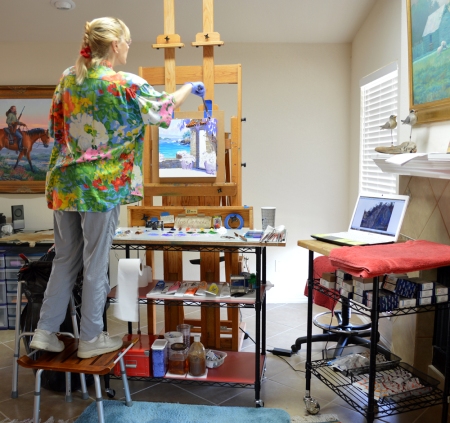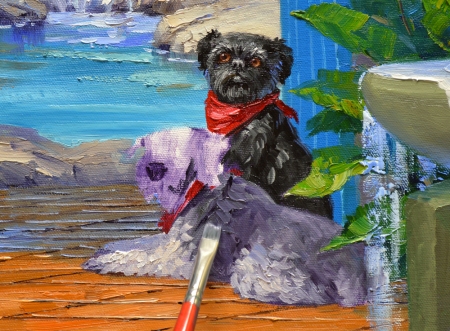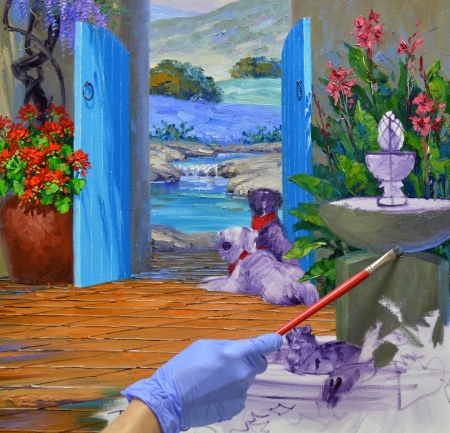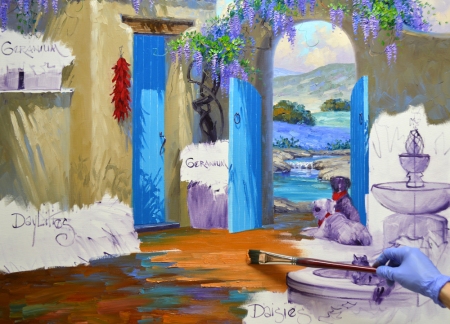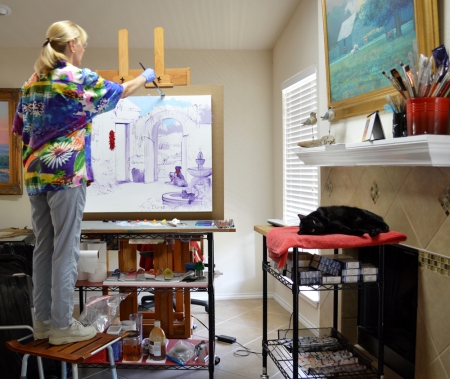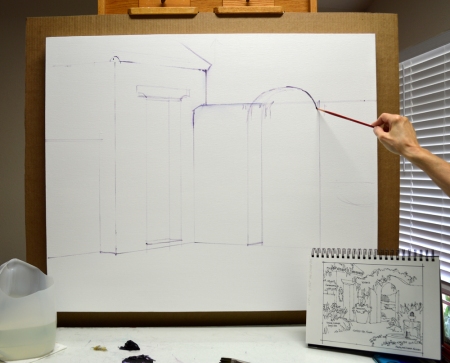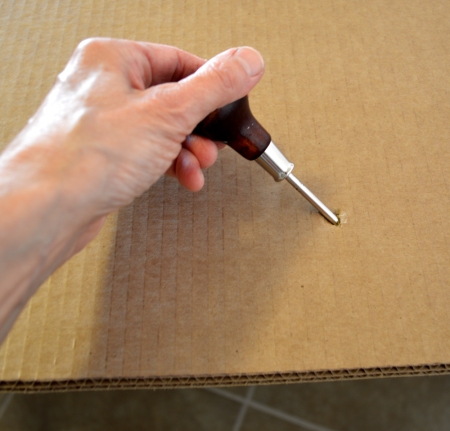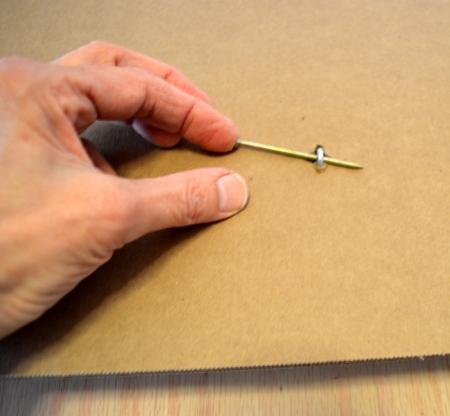The rock walls of our cottage by the sea are mixes of Cadmium Orange + a tiny bit of Pthalo Blue + White. Ultramarine Blue + Alizarin Crimson is added into the mixtures for the shadows. Then the twisted Wisteria trunk is drawn into the wet paint of the walls all the way around the sides of the gallery wrapped canvas.
Many of my readers have asked to see my palette as I’m working. The colors lined up on the left are saved from the previous session. That way if I need to go back and do any touch up I don’t have to remix them. The mixes for the Wisteria are laid out underneath my regular colors along the top of the palette. The purples are combinations of Ultramarine Blue + Dioxazine Purple + White and Dioxazine Purple + White. The greens are made of various proportions of Pthalo Blue + Cadmium Yellow Medium + Lemon Yellow.
I get up on a step stool to paint the top edge of the canvas. You can see our studio set up here. My palette rests on top of a 2 shelf culinary cart. The taboret is a smaller culinary cart that also has a couple of shelves. Everything is on wheels so it’s easy to adjust to any size painting. To see this better you can enlarge the picture by clicking on it.
The basic purples of the Wisteria blooms were painted first. Then the green leaves were painted around the masses of purple, helping to shape the dangling blossoms. The final step is to add individual flower petals.
One of the neatest things about collaborating with clients on commissions is matching special requests for color. Teri emailed me a picture of the red tag that our gallery in Santa Fe places on the wall by paintings that have sold. She said that’s the color of red I what the door to be. Well I certainly have to agree with her, I like the color of those red tags too. Especially when they’re by my pieces 🙂 To achieve that shade of red I’ve mixed Cadmium Red Medium + Alizarin Crimson + White. More White is added for the lighter mixture.
The shadow area is painted first, then the sunlit portion of the door is covered.
Add the door handle, along with the lines separating the boards, and we’re done for today. I had a question about the size of this piece, it measures 14 inches by 14 inches. Hope you’ll always feel free to ask questions. As I’ve been writing this blog we’ve been handing out goodies to all the ghost and goblins who’ve been knocking on our door! Have a HAPPY HALLOWEEN.


